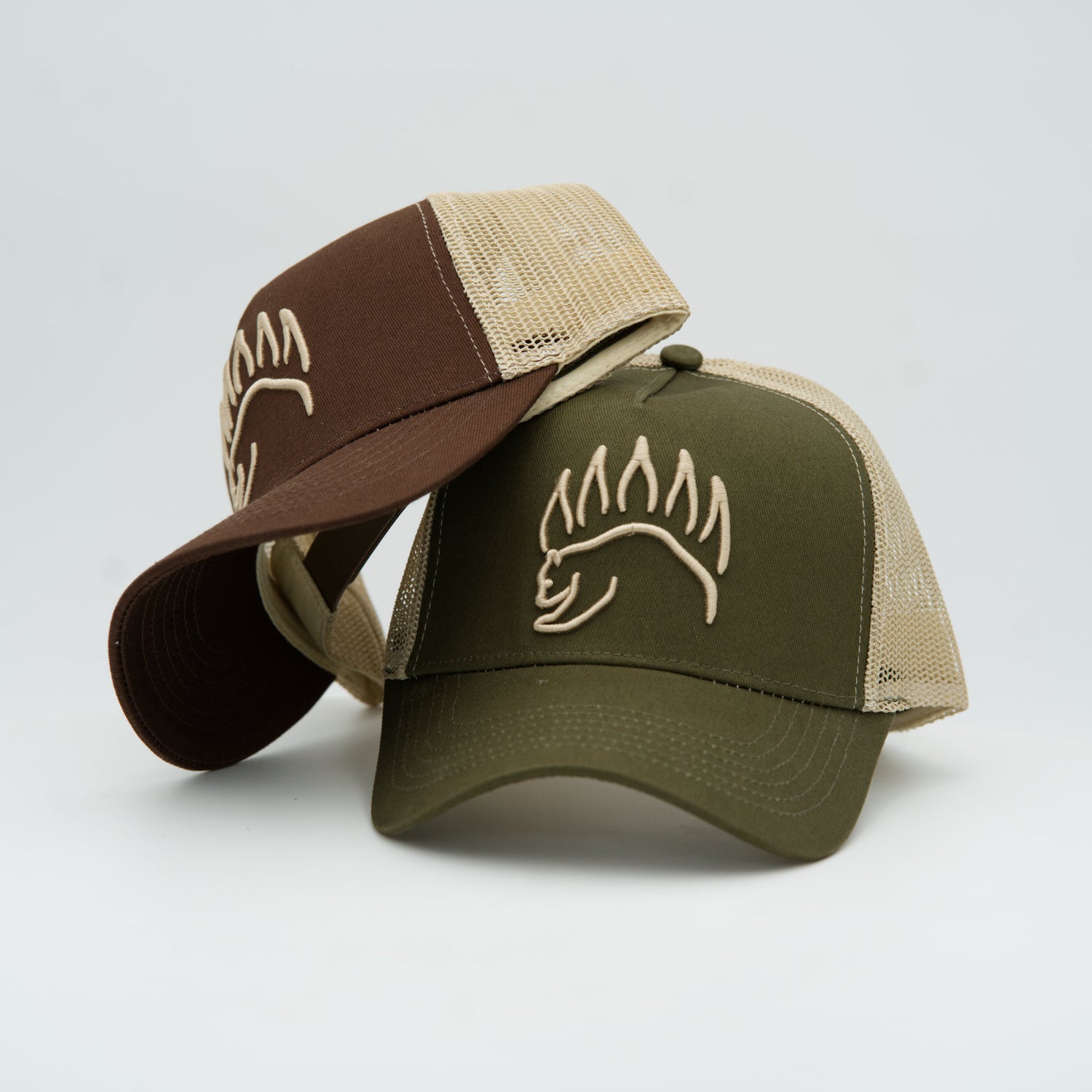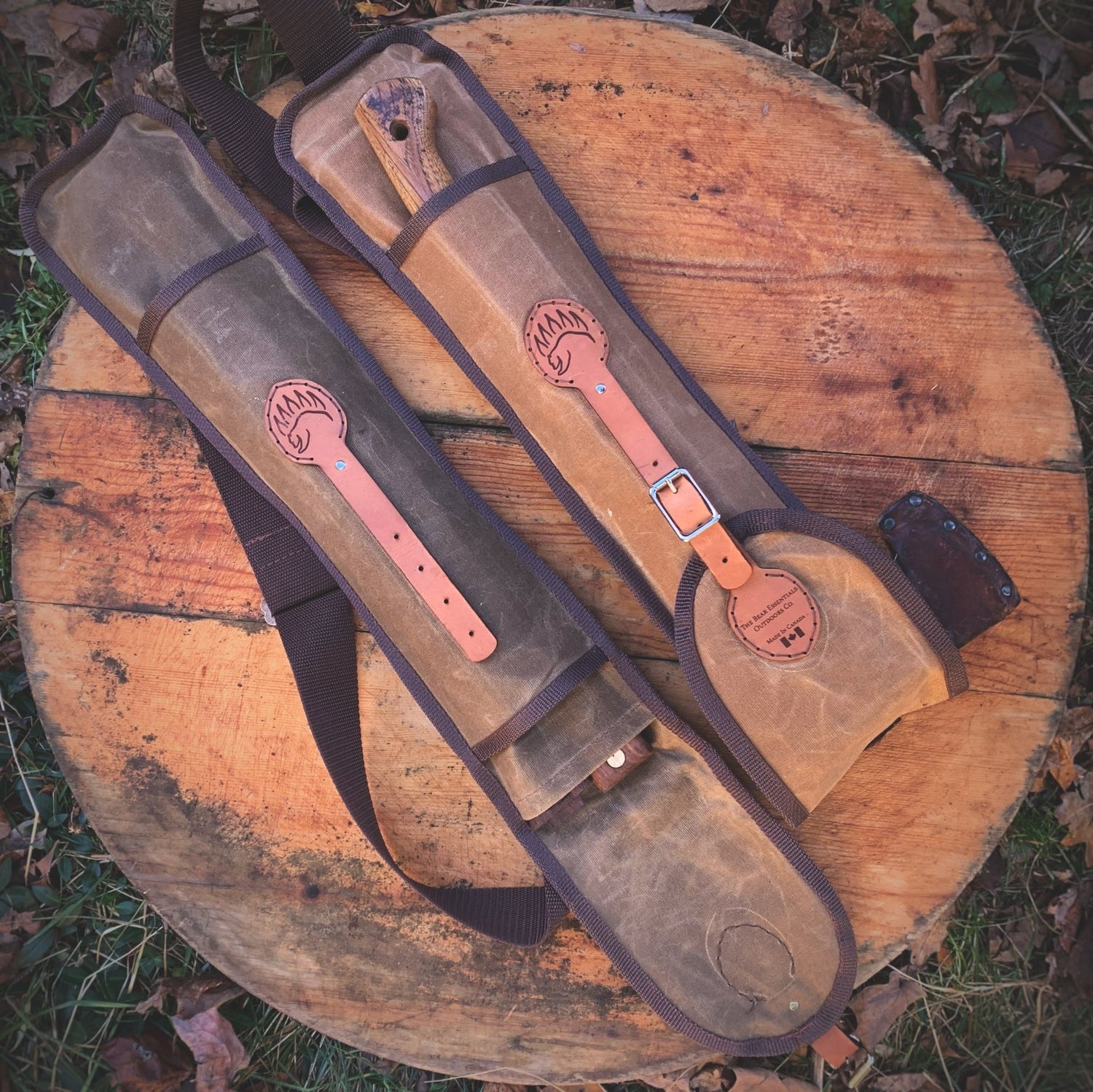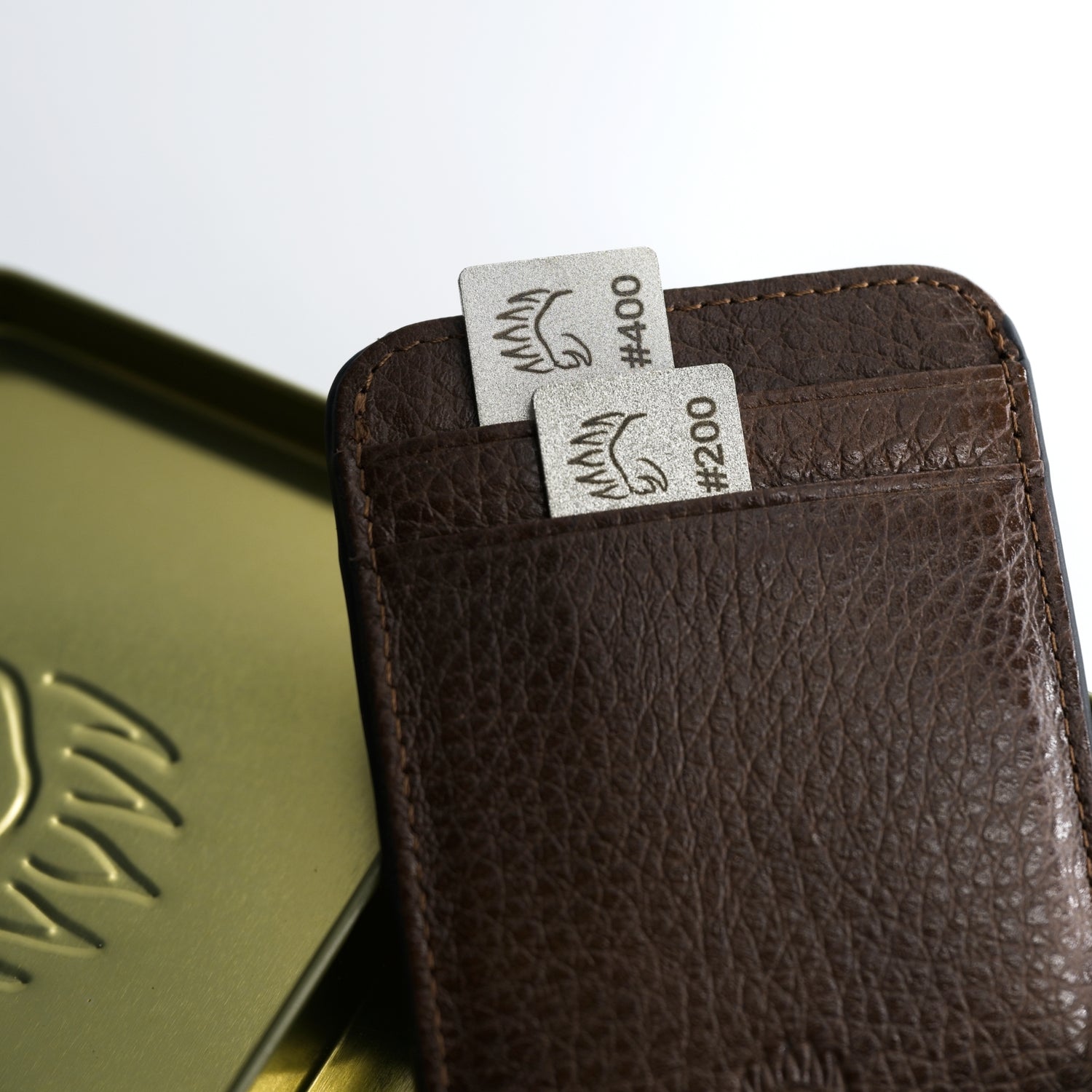If you carry rope but can’t quite remember what to do with it once the wind kicks up, this one’s for you. In the mess of tent lines, wet tarps, clattery carabiners, and slippery cordage, one loop keeps showing up in every serious kit: the bowline. Learn it once and suddenly half your camping knots and lash-downs snap into place.
In this guide I’ll show you why the bowline belongs at the front of your essential outdoor knots list—and how four supporting knots cover 90% of real-world chores, from tarp knots to bowline boat knots. We’ll stay practical, safety-minded, and ruthlessly simple.
Bowline Knot Uses: What It Does
The bowline is a fixed loop—a non-cinching loop you tie at the end of a rope. Under load it bites hard; when you’re done, it still unties easily, even if it’s been soaked, gritty, or stress-tested. That’s rare, and that’s why it leads the pack of essential outdoor knots.
Bowline knot uses you’ll hit right away:
- Tarp corner knot that won’t crush a grommet
- Knot for tent guy lines when you want a permanent loop on one end
- Loop around posts, rails, tree straps, or a bucket handle
- Sailing bowline knot for jib sheets and rings—classic bowline boat knots
-
Quick improvised loop around a person or pack (with backups)
Why it’s first: it’s fast to tie, doesn’t jam, and solves a wide set of problems without special hardware. Snap it into your “always on hand” set of useful camping knots.

Bowline Safety 101: The Realities Behind Essential Outdoor Knots
A plain bowline is a champ—until cyclic loading (slack-pull-slack from wind, waves, or engine vibration) massages it loose, especially on slick cord. Here’s how to keep it safe:
- Dress it cleanly. Flat parts, no twists, snug the collar.
- Leave a real tail (not a token one).
- Add a stopper knot (a snug double overhand) when there’s vibration, motion, or shock loads.
- Consider the Yosemite finish to resist capsizing on modern, glossy sheaths.
-
Know your context. In group instruction and climbing schools, a figure-8 tie-in is often preferred for inspectability. For general outdoor work—tarps, lines, tie-downs—the bowline plus good habits is gold.
Think of this as the “seatbelt policy” for essential outdoor knots: dress, tail, backup.
Five Essential Outdoor Knots To Know
Master these five and you’ll have the best knots for camping, paddling, bushcraft, and small-boat days. The bowline is the home base; the others orbit it.
1) Bowline Knot — The Loop That Won’t Cinch
Why: Makes a dependable fixed loop that doesn’t strangle fabric or hardware and unties after load.
Where to use:
- Tarp corner knot at grommets or webbing loops
- Knot for tent stake lines (pre-tie a loop and larks-head to the stake)
- Around posts, rails, tree straps, bucket or stuff-sack handles
- Sailing bowline knot for clew attachments and dinghy work
Pro tips: Dress it, set it; if the line will vibrate, Yosemite finish + stopper. Practice a one-handed bowline for emergencies.
2) Trucker’s Hitch — Your Built-In Pulley for Tension
Why: When you need to crank a line tight—tent tie down knot on a ridgeline, canoe on a rack, bins in a truck—this is the knot. It creates mechanical advantage (like a tiny block and tackle), then locks off quickly.
Where to use:
- Ridgeline for tarps (bowline on one end; trucker’s hitch on the other)
- Lash-downs on roof racks or trailers
- Guyline sections that need extra tension
Pro tips: Learn one stable version and stick to it (there are many). Use a quick-release finish if you’re the type who breaks camp before coffee.
3) Taut-Line Hitch / Midshipman’s Hitch — Adjustable Guyline Control
Why: This is the slider that turns flappy shelters into a smug pitch. It grips under load and adjusts with a push.
Where to use:
- Knot for tent guy lines when conditions change overnight
-
Tarp corners needing micro-tweaks
Pro tips: On slick, modern cords, traditional taut-lines can creep; upgrade to an Adjustable Grip hitch (or add an extra wrap) for more bite. This belongs on your useful camping knots shortlist.
4) Alpine Butterfly Loop — The Midline Powerhouse
Why: It’s the mid-rope loop that holds load in multiple directions without access to the ends. If you only add one “fancy” loop to your bushcraft knots, make it this.
Where to use:
- Hang gear from a ridgeline without loosening the whole system
- Redirect a pull around a tree or carabiner
- Isolate a frayed section of rope and keep working
Pro tips: Dress it neatly and you’ve got a strong, stable midline anchor in seconds.
5) Sheet Bend (Double) — Joining Mismatched Ropes Like a Pro
Why: Purpose-built for joining ropes, especially different diameters—something two bowlines don’t do as cleanly.
Where to use:
- Extend a too-short guyline
- Join a painter to a beefier tow line
Pro tips: Tie the double sheet bend for insurance, especially under shock. If in doubt, test under expected tension before committing your shelter or load.
(Optional add-ons if you’re feeling spicy: a clove hitch for quick, temporary staging—always back it up—and the buntline hitch when you need a hitch that resists shaking loose.)
The Bowline-First System in Real World Setups
You’ll remember essential outdoor knots faster if you see them working together. Three field-tested layouts:
Storm-Ready Tarp (Windy Weekend Special)
- Tie a bowline in the corner lines so you have fixed, non-cinching loops that won’t chew the tarp.
- Build your ridgeline with a bowline at one anchor and a trucker’s hitch at the other. Crank it tight.
- Put taut-line hitches on the guylines for quick micro-adjustments as the wind shifts
Why it works: The bowline protects fabric; the trucker’s hitch provides raw tension; the taut-line refines it. This trio defines tarp knots that actually stay put.
Campsite Utility (Do-Everything Day)
- Throw a bowline around a branch to hang a food bag or lantern.
- Use an alpine butterfly mid-ridgeline as a tidy clip-in point for jackets or a drying line.
- Extend a short cord with a double sheet bend to finish your pitch
Why it works: Fast, modular, and adjustable—best knots for camping are the ones you can tie cold, wet, and tired.
Small-Boat Basics (Simple, Durable, Reversible)
- Sailing bowline knot to the clew or a ring—clean, compact, non-jamming.
- A trucker’s hitch to snug a quick lash on a paddle or cooler.
- A clove hitch to stage a fender (back it up with a half-hitch)
Why it works: These bowline boat knots untie after spray and load, and the system stays serviceable all season.
Learn Fast, Stay Safe: How to Actually Lock in Essential Outdoor Knots
Speed comes from reps and good habits, not memorizing cartoons. Do this:
- 30-Rep Rule: Tie 30 slow, clean bowlines. Then 10 eyes-closed. Then 10 while wearing gloves.
- Dress + Stress: Before you load, dress the knot (flatten twists, snug collars). After you load, recheck and re-tension what needs it—especially trucker’s hitches and taut-lines.
- Backups on Autopilot: If there’s vibration, slick cord, or consequence, add a stopper (for bowlines) or extra half-hitches (for clove/buntline).
- One-Handed Bowline Drill: Around your waist or a fixed post, learn the one-handed version. It’s a confidence booster and a legit back-pocket skill.
-
Test Under Expected Loads: New cord behaves differently. If you just bought a glossy guyline kit, test your tent tie down knot and knot for tent stake at home with a fan or some tugging before the forecast goes spicy.
Bowline vs Figure-8: The Honest Comparison for Essential Outdoor Knots
- Bowline wins when you need a loop that won’t cinch and will untie after abuse. It’s faster to tie, compact, and perfect for tarps, tie-downs, and small-boat work.
- Figure-8 follow-through wins when you need a knot that’s dead-simple to inspect for beginners or groups—why it’s standard in many climbing and instruction settings. It can weld tight after heavy loads, which is both a feature (security) and a pain (untying).
Bottom line: For general outdoor use, put the bowline at the front of your essential outdoor knots list. Know the figure-8 exists, respect where it’s required, and apply the right tool to the job.
Common Mistakes and Quick Fixes
- Too-short tail on a bowline. Fix: longer tail + double overhand stopper snugged to the knot.
- Messy dressing = mystery knot. If it looks off, it probably is. Undo and retie before loading.
- Sheet bend used for shocky loads without upgrade. Fix: use a double sheet bend or choose a different connection; test with the kind of yank it’ll actually see.
- Clove hitch trusted solo. It’s fine for staging; back it up with half-hitches or pick a buntline when you want shake-resistance.
-
Taut-line creeping on slick cord. Add a wrap or switch to an Adjustable Grip/Farrimond style hitch. You’ll save yourself a 2 a.m. tarp flapping session.

Which Knot To Use When
- Need a fixed loop that unties later? Bowline.
- Need maximum tension on a line? Trucker’s hitch.
- Need adjustable guylines? Taut-line / Midshipman’s hitch (or a friction hitch on slick cord).
- Need a midline loop that handles load both ways? Alpine butterfly.
- Need to join ropes (especially different sizes)? Sheet bend, doubled if the stakes are higher.
-
Need a fast hold on a post? Clove hitch (temporary; back it up).
This matrix is the backbone of essential outdoor knots for camp, trail, and dock.
Field Notes
- Best knots for camping: Bowline (corner loops), Trucker’s Hitch (ridgeline tension), Taut-line (guylines), Alpine Butterfly (midline gear point), Double Sheet Bend (extensions).
- Bushcraft knots: Add timber hitch and constrictor if you’re doing heavy lashing, but keep the bowline as your default non-cinching loop.
- Knot for tent stake: Pre-tie a bowline loop and larks-head it to the stake, or use a round-turn with two half-hitches for a removable solution.
- Knot for tent guy lines: Taut-line is the classic; consider a friction hitch upgrade for today’s slick cords.
- Tarp knots that actually work: Bowline at corners, Trucker’s Hitch on the ridgeline, Taut-line on the corners/guys. Three moves, storm-proof results.
-
Bowline boat knots: Bowline to clew or ring, clove (backed up) to stage a fender, round-turn with two half-hitches for general posts. Keep it clean and inspect often.
Quick 30-Second Knot Tying Tutorials
Bowline Knot (classic steps):

Make a small loop (the “hole”), tail up through the hole, around the standing part, back down through the hole. Dress flat; set; add stopper if motion’s involved.
Trucker’s Hitch (one solid method):
Tie a small fixed loop (e.g., a slip knot or overhand-on-a-bight). Run the working end around the anchor and back through the loop for mechanical advantage. Haul tight, then finish with two half-hitches or a quick-release.
Taut-Line / Midshipman:


Two wraps toward the load under the standing part, one wrap away from the load on the outside, dress and set. Add an extra initial wrap for slick cord.
Alpine Butterfly Knot:

Wrap the rope around your hand twice (three lines across your palm), pull the middle bight over the near strand and under the far strand, then flip it out. Dress into a neat, symmetrical loop.
Double Sheet Bend:

Create a bight in the thicker/stiffer rope. Pass the thin rope through the bight, around both legs of the bight, then around again, and tuck under itself. Dress and set.
These aren’t just useful camping knots—they’re your everyday utility kit.
Frequently Asked Questions
Why is the bowline often called the “king” of knots?
Because it makes a reliable fixed loop that holds under load and still unties. In real outdoor life, that combo is priceless.
When should I avoid a plain bowline?
When there’s vibration or slack-tension cycles (wind, waves, engines) or you’re using very slick rope. Dress it perfectly, leave a long tail, add a stopper—or upgrade to a Yosemite finish or double bowline.
What’s the best knot for tightening a tarp?
The trucker’s hitch—it gives you mechanical advantage to crank the ridgeline or guyline tight, then locks off quickly.
Is the taut-line hitch still good with modern cord?
Yes—but on slick sheaths, add a wrap or switch to a friction-forward variant like the Adjustable Grip. If your tarp sags at 3 a.m., this is the fix.
What mid-rope loop should I learn after the bowline?
The alpine butterfly. It’s stable under multi-directional load and isolates a damaged section so you can keep working.
Sheet bend vs two bowlines to join ropes?
For joining, especially different diameters, a sheet bend (double it for extra grip) is the right tool.
You Don’t Need A Hundred Essential Outdoor Knots
The fastest way to feel competent with rope isn’t hoarding a hundred fancy ties—it’s mastering a micro-quiver of essential outdoor knots and using them everywhere. Lead with the bowline—your non-cinching loop that unjams when you need it. Layer in the trucker’s hitch for tension, the taut-line for adjustments, the alpine butterfly for midline magic, and the double sheet bend for extensions. Tie clean. Dress neat. Back up when loads get wild. Then watch your camp, boat, and day-to-day rigging get calmer, stronger, and faster—no gadgets required.
Now grab a cord and give yourself 10 minutes. By tomorrow night, your shelter will look like you hired a rigger.




